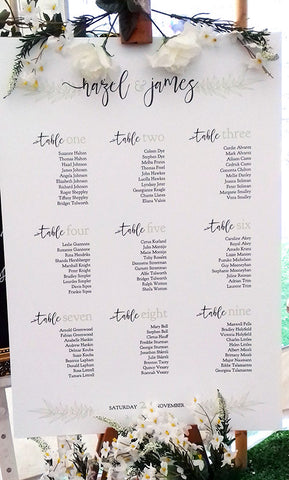Table Seating Plan Tips

When thinking about your wedding reception, it’s a good idea to get started on your seating plan at least a couple of weeks before the special day, and have most of it done with a week to spare for final changes. Last-minute changes could include adding new guests or people dropping out.
Plan the layout of the room first and consider speeches, cake cutting, photography and easy access for caterers and then get started on the seating arrangements.
Who sits at the Top Table?
By tradition, the top table will be oblong and facing towards the room. In modern times, you are not obliged to have your families sitting with you on the top table (particularly if there are challenging family politics to consider) and therefore you may wish to alter the following customary layout:
Facing the Table, from Left to Right:
Chief Bridesmaid, Father of the Groom, Mother of the Bride, Groom, Bride, Father of the Bride, Mother of the Groom, Best Man.
Making the table seating plan:
- Start making your table plan a couple of weeks before your special day so you’ll have most of it done a week before.
- Be prepared for those last-minute changes and final shuffling of guests.
- Use pieces of paper for the tables and write guests names on sticky notes and position them around the paper.
- Tables don’t need to be numbered, it’s quite nice to use table names instead, something relevant or meaningful to you and your spouse – favourite cities, singers/bands or actors, for example.
- List surnames by alphabetical order on the Table Plan so that guests can easily find their tables.
- Mixing your guests helps people mingle. Try to alternate males and females for an equal balance and keep couples on the same table. Ultimately, try to blend people who you think might have common interests, whilst making sure everyone knows at least one other person on their table.
- Try to spread the number of guests evenly on the tables and stick to a maximum of 10 on round tables.
- Think about anyone who might need easy bathroom access.
- If you’re having a very large wedding, you could have two seating charts so to avoid large crowds blocking the reception entrance.
